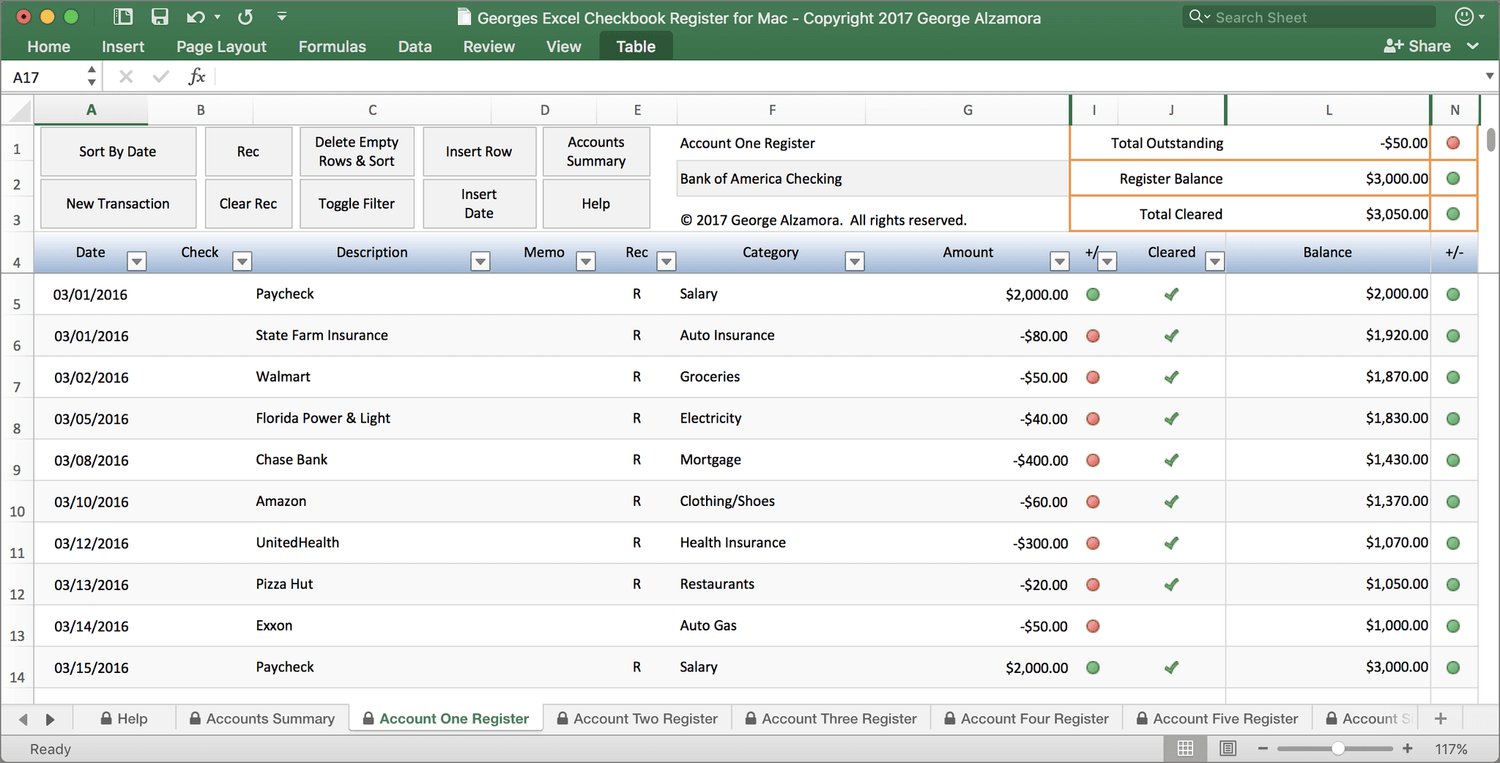

- Find a checkbook template in excel for a mac for mac os x#
- Find a checkbook template in excel for a mac for mac#
- Find a checkbook template in excel for a mac windows#
Find a checkbook template in excel for a mac windows#
The Windows version of Excel 2016 enables you to set a default location for saving your files.
Find a checkbook template in excel for a mac for mac#
Features available in Excel 2016 for Windows that are not available in Excel 2016 for Mac This information was true as of October 2017, but the product may have changed since this list was compiled. Important: Microsoft release regular updates that may implement missing features or change the way that Excel 2016 behaves.
Find a checkbook template in excel for a mac for mac os x#
It only lists the differences relating to the skills taught in our Excel 2016 for Windows and Excel 2016 for Mac OS X courses. The list below is not a complete analysis of every difference between the Windows and Mac versions. You can find out more about the new Apple books by clicking here. We’ve finally done this with the release of our Excel 2016 Essential Skills and Expert Skills books specifically for the Apple Mac OS X version of Excel 2016. The Excel 2016 for Mac version has a reduced feature set and a radically different user interface to the Excel 2016 for Windows version.įor many years Mac users have asked us to create a version of our best-selling Excel courses for the Mac version of Excel. But if you haven’t created these files, Excel is perfectly happy to use its own settings.You could be forgiven for thinking that the (confusingly named) Excel 2016 for Mac (suitable only for Apple computers) was “just the same” as Excel 2016 for Windows. In other words, Excel uses your template files to set the defaults for new workbooks or worksheets, if these files exist. If you haven’t created your own template files to control the default settings, Excel uses its own internal settings - not an actual template file. The term default template may be a little misleading. The Microsoft Office Online templates (discussed earlier in this chapter) are examples of this type of template.

Typically, these templates are set up so that a user can simply plug in values and get immediate results. Custom workbook templates: Usually, these ready-to-run workbooks include formulas, but they can be as simple or as complex as you like.The default worksheet template: Used as the basis for new worksheets inserted into a workbook.The default workbook template: Used as the basis for new workbooks.

Save the template file using a special name, and then every new workbook that you create (including the workbook created when Excel starts) has your customized page settings.Įxcel supports three types of templates, which I discuss in the following sections: In this case, the modification consists of inserting your header into the template. The solution is to modify the template that Excel uses to create new workbooks. Consequently, the first time that you print a worksheet, you need to spend time entering the header and footer information.Īlthough it isn’t a lot of work, wouldn’t it be easier if Excel simply remembered your favorite page settings and used them automatically? For example, you may always like to use a particular header or footer on your printouts. Why create custom templates? The main reason is to make your job easier. The remainder of the chapter deals with custom templates - templates that you create. So far, this chapter has focused on templates that were created by others. The New dialog box displays downloaded and custom templates stored on your hard drive. Clicking My Templates displays the New dialog box shown in Figure 8.4. To create a workbook from a modified template, you must select the template from the My Templates icon in the Available Template screen. When you open a XLST (or *.XLT) template file, you are opening the actual file - you are not creating a workbook from the template file.


 0 kommentar(er)
0 kommentar(er)
